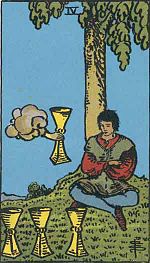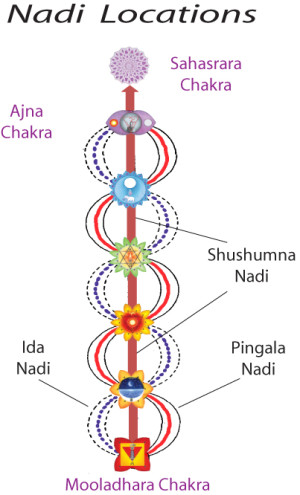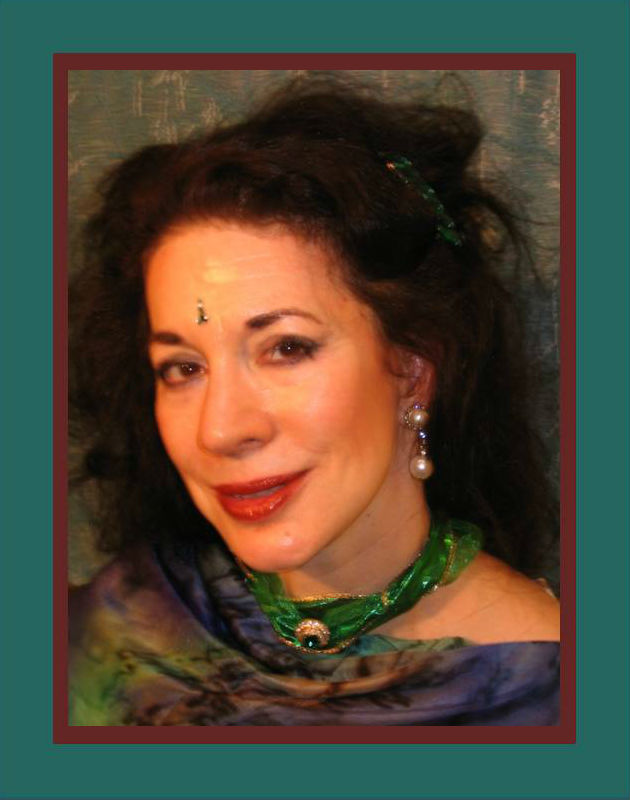Belly Dance Veil Instructional YouTube Vid by Imei Hsu Shows Softness, Sensitivity, Technique
Too many of us in Oriental dance have performances that are heavy on the glitz and glamour – all brightly-colored, sequined and beaded costumes, big smiles – and not enough sensitivity and depth of emotional feeling.
One of the best ways to enrich our emotional repertoire is by dancing with a veil.

Veil dancing gives us mystery and depth.
I learned this from two of my master teachers in Oriental dance, Anahid Sofian and Elena Lentini.
Both of these teachers were renowned for their flowing and expressive veil movements.
In Chapter 4 of Unveiling: The Inner Journey, I describe one of Anahid’s favorite veil drapes, the “Turkish turtleneck.”
In Unveiling’s Chapter 26: Selective Revelation, I share a powerful lesson that Anahid taught me.

From Unveiling: The Inner Journey:
What was it that Anahid had, and that I had totally forgotten?
Simply, it was the power of holding something back.
In my dance, I had started the way that many dancers start these days; holding my veil behind me, and using it to frame myself as I moved across the floor. There is nothing wrong with this. In fact, if the music is very active and dynamic, theis can be a great dance opening! However (and this is important), this approach lacks the power of mystery and suggestion.
In the dance that Anahid showed me, she started by staying in one place, with the veil wrapped around herself. She held the veil edges in such a way that her hands were covered. She held her hands high enough so that, with the veil wrapped around her from behind, it covered her face as well. [pp. 359-360]
Where Can We Learn Good Veil Techniques on YouTube?

In last week’s Alay’nya Studio blog, I shared one of my favorite recent finds – a YouTube vid veil performance by Imei Hsu: Bellydance Veil for Emotional Performance.
Today – in preparation for this week’s class, and for those of you who are studying with me “virtually” – let me recommend two of Imei’s instructional vids.
Basic Veil Openings and Movements
If you are just beginning your veil work, start with: Imei Hsu’s How-To Veil Basics. Although she starts even beginners with a 3 1/2 yard veil (and recommends 4 yards for taller students), her techniques are very accessible; within a short time, even a beginner can be using these techniques and looking very good.
Soft, Graceful, and Emotionally-Rich Veil Openings and Movements

Imei has a second, slightly more advanced tutorial: Imei’s Advanced Belly Dance with Veil YouTube Instructional Vid.
If you have problems loading this clip by clicking on the link above (YouTube is being just a tad bit tetchy today), then open a browser in YouTube, and enter the key words:
Imei Hsu Belly Dance Seattle Classes How To Dance With a Veil – you’re looking for a vid clip that is 8 minutes 14 seconds long. That should get you there.
Once again, here’s the link to Imei’s Advanced Belly Dance with Veil YouTube Instructional Vid.
I like this clip because it breaks down several of the techniques taught to me by Anahid and Elena. Imei credits Melina (of Daughters of Rhea) with some of her techniques.
Here are some special points to note:
- Longer-than-average veil allows more flexibility with dance opening moves. Imei favors a 3 1/2 yard veil. Most veils today come in 2 1/2 yard and 3 yard sizes. When you go to a 3 1/2 yard veil, it is a bit more difficult (especially for shorter dancers), but the increased vocabulary range makes it worthwhile.
- Emotionally-compelling dances often begin by keeping yourself fully veiled from view. Imei shows two lovely variations on how to enter covered with your veil, where one of the long ends is tucked into your hip belt. The veil can be draped so it covers your head and torso, either coming up from the front, or swooshed to the back and draping down over your front. Both are lovely and give a subtle sense of mystery and drama to your opening moves.
- Your longer veil gives you more options for framing and partial draping. Imei shows how you can frame yourself from behind, or throw your veil over one shoulder and arm – while still keeping the tail end tucked in your sash. There’s a lot of choreographic and expressive flexibility with these moves.
- Lovely way to frame your hips for shimmies. Imei shows a very pretty and useful way to have the veil close-held and yet frame your hips, about 3 min, 40 seconds into this clip.
- Beautiful “Z” movements – can be combined with turns. This section is very reminiscent of some of Elena Lentini’s movements; about 5 minutes into this clip. A dramatic flip-up, followed by “double-Z’s” is very reminiscent of what I’ve learned from Elena! (About 5 min, 40 seconds in.)
- Veil work – with back to audience – can be a lovely lead-in to shimmies. See a section about 6 minutes in. Imei shows the same movement she just did previously, with back to you (the audience; the camera), followed by a little in-place shimmy. Delightful!
- Play with your veil as though it were your dance partner. Imei’s concluding technique demonstrations – starting about 6 1/2 minutes in – show a beautiful veil change-of-pattern embedded into an in-place turn; this was new to me and very worth learning. She follows with a segment on holding the veil (more or less) steady in front while doing a turn – I prefer to hold the veil more taut for this. (Petite Jamilla shows this beautifully on her DVD, Unveiled.) Her concluding techniques are both lovely and dramatic, and well worth mastering.
If you are studying with me – either in-person or virtually – please review both of these YouTube clips before class on Sunday.
Right after Sunday’s class, I’ll post a very quick little “class review notes” blog. It will cover techniques and micro-choreographies that will be our homework for the coming week.
Whether you’re with me in person or at a distance, please do chime in with your comments as we move through Autumn Quarter, devoted to emotionally-expressive movements in Oriental dance!
Very best wishes as you use Oriental dance (belly dance) for expressing those aspects of yourself that come out only when you dance!
Yours in dance –

Alay’nya
Author of Unveiling: The Inner Journey
You are the Jewel in the Heart of the Lotus. Become the Jewel!
Founder and Artistic Director, The Alay’nya Studio
Bellydance a courtesan would envy!
Check out Alay’nya’s YouTube Channel
Connect with Alay’nya on Facebook
Follow Unveiling: The Inner Journey on Facebook
|
Paper |
Kindle |
|||
Copyright (c) 2013, Alay’nya. All rights reserved.
Related Posts: Veil Dancing
- Invoking Hathor: Emotional Expression Using Mid-Eastern Dance (Belly Dance)
- Vintage-Style Oriental Dance: Veil Dancing and Floorwork (A YouTube Resource – Alay’nya performing a veil dance to Desert Wind’s Diaspora)
- Seven Tips to Make Your Veil Your Friend (Multiple YouTube Resources)
- Dancing With Your Veil: YouTube Resources
Related Posts: Autumn – Esoteric Energy Dance for the Season of Cups (Metaphysical Element of Water)
- Autumn Lesson 4: Breaking Through Emotional Resistance (Lessons from the Minor Arcana’s Four of Cups – Moving Out of Stuck Situations)
- Autumn Lesson 3: Unifying Our Energies (Lessons from the Minor Arcana’s Three of Cups – Bringing Three Types of Vital Energy Up Our Spines: Ida, Pingala, and Sushumna)
- Autumn Lesson 2: Filling Our Energy Well (Lessons from the Minor Arcana’s Two of Cups – Filling Our “Energy Well” Using Circular, Rolling, and Snake Movements with the Chifti Telli Rhythm in Esoteric Belly Dance
- Autumn Lesson 1: Energy Dancing with a “Water Feeling” – Flowing and Swirling Motions (Lessons from the Minor Arcana’s One of Cups – Playing with Water Energy in Dance: Flowing and Swirling and “Fluid” Motions













